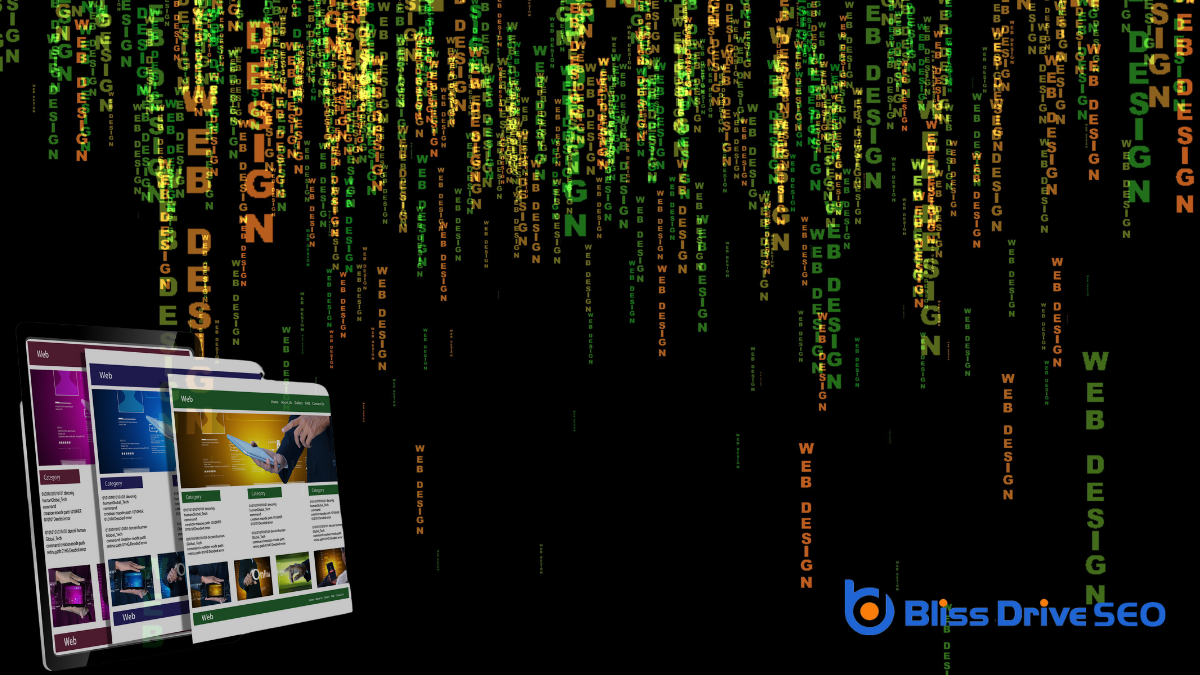Digital Marketing Services
Learn More About Us

When you're designing a website, understanding the four main types of design structures can completely transform how users interact with your content. You might be familiar with hierarchical structures, which mimic a filing cabinet, but have you considered how sequential, matrix and database-driven structures might suit your needs? Each offers unique advantages, from guiding users in a linear fashion to enabling dynamic, personalized experiences. But how do you choose the right one for your website's goals and user expectations? Let's explore these structures and discover the benefits they can bring to your project.
A hierarchical structure is one of the most common ways to organize a website. You'll find it particularly useful if your website contains a lot of content that needs clear categorization. Think of it like a tree, where your homepage serves as the trunk, and each branch represents a category or section that further divides into subcategories.
When you set up a hierarchical structure, you're giving users an intuitive path to follow. This approach helps them find the information they need quickly. You can start by mapping out all the content you want on your site. Group related topics together and decide which ones should be top-level categories and which ones should be subcategories.
With a well-designed hierarchy, you'll improve your site's usability. It's easier for visitors to understand where they are and how they can get to the information they're seeking.
Also, search engines appreciate this structure since it reflects logical content organization, which can enhance your site's SEO.

When organizing a website with a sequential structure, you guide users through a linear path of content, much like turning the pages of a book. This design is ideal for situations where information needs to be processed in a specific order, such as online courses, tutorials, or step-by-step guides.
By using this structure, you keep the user focused on one piece of content at a time, ensuring they don't skip important information.
To implement a sequential structure effectively, you should plan each step carefully. Consider what information is vital at each stage and how it builds upon the previous content.
Make sure your navigation is intuitive, allowing users to move forward and back easily. Buttons like "Next" and "Previous" are essential tools, as they provide clear direction and keep the user on track.
When you choose a matrix structure for your website, you offerThe specific product or service being promoted by affiliates. users navigational flexibility, allowing them to explore content in various ways.
This non-linear user experience is perfect for sites with complex content organization, as it lets visitors easily find what they're looking for.
Consider how this structure can enhance user engagementThe level of interaction and involvement users have with social media content. by giving them control over their browsing path.
Maneuvering a website with ease is essential for a positive user experience, and the matrix structure offers remarkable flexibility to achieve this. By allowing users to take multiple paths to reach their desired content, this structure enhances navigation and engagementThe interactions that users have with a brand’s content on social media..
You're not forced into a rigid, linear path; instead, you have the freedom to explore various routes, making your journey through the website personalized and intuitive.
Here's why navigational flexibility in a matrix structure stands out:
In a world where attention spans are short, this flexibility guarantees you stay engaged.
In the domain of web design, a non-linear user experience powered by a matrix structure transforms how you interact with content. Unlike linear designs, where you follow a straight path, the matrix structure allows you to explore content in various sequences. It's like traversing a web of interconnected pages rather than a single thread. This design provides freedom, letting you choose your path based on interests or needs, creating a more personalized experience.
You'll find this structure especially useful if your website has diverse content that doesn't naturally fit into a sequential order. It encourages exploration so you can discover related topics without being restricted to a predetermined path. This makes the experience dynamic and engaging, as you're not confined to a linear journey.
Incorporating a matrix structure requires careful planning. You need to guarantee that each page or piece of content is accessible from multiple points. Clear links and intuitive navigation are essential so you don't feel lost.
The goal is to create an environment where you can easily jump between pages, providing a seamless and enjoyable experience. Ultimately, a non-linear approach helps you engage more deeply with the content, enhancing satisfaction and understanding.
As you embrace the freedom offered by a non-linear user experience, organizing complex content with a matrix structure becomes a strategic endeavor. This structure allows for flexible navigation paths, catering to users who seek customized journeys through your content.
The matrix structure is particularly useful when your website contains diverse categories or interconnected topics. By using this approach, you empower users to explore content based on their unique interests and requirements.
To effectively implement a matrix structure, consider the following:
In adopting a matrix structure, you're not just organizing content; you're crafting an experience that respects user autonomy.
This method can leadA potential customer referred by an affiliate who has shown interest in the product or service but h... to increased engagement and user satisfaction, as visitors appreciate the ability to chart their own course through your website's wealth of information.
In a database-driven structure, you can manage dynamic content seamlessly, allowing your website to respond to user interactions in real time.
This structure enhances user engagement by delivering personalized experiences based on the data collected.
Harnessing the power of dynamic content management through a database-driven structure revolutionizes the way websites operate and engage with users. By utilizing this structure, you can create a more personalized and efficient experience for your audience.
Dynamic content management allows you to store, retrieve, and display information from databases in real time, guaranteeing the content is always current and relevant.
Here's what dynamic content management offers:
When you implement dynamic content management, you're not just managing content; you're crafting an adaptable and responsive online presence.
This structure enables your website to evolve with your audience's needs, providing a seamless and personalized experience. Embrace this system to keep your website fresh, relevant, and efficient, directly impacting user satisfaction and engagement.
A database-driven structure greatly enhances user interactionAny action taken by a user on social media, such as likes, comments, shares, or retweets. by offering real-time responsiveness and personalization. It allows your website to adapt to each visitor's needs and preferences, which can considerably improve their experience. When a user inputs data or requests information, the database processes it instantly, ensuring they get the most relevant content quickly. This type of structure is especially useful for e-commerce sites, social media platforms, and any site requiring frequent updates.
With a database-driven design, you can store vast amounts of data efficiently. This means you can offer features like user accounts, personalized recommendations, and tailored content, making your site more engaging. Users appreciate when a website remembers their past interactions and suggests products or articles that match their interests. This personalization can drive user satisfaction and loyalty.
Moreover, maintaining and updating your content becomes simpler. You can easily manage data entries, ensuring your website always delivers accurate information.
Plus, you can automate many processes, reducing the need for constant manual updates. By adopting a database-driven structure, you're not just enhancing user interaction; you're also streamlining your website's operations, making it more efficient and user-friendly.

When you're diving into website design, picking the right structure can make or break your site's effectiveness. The structure is the backbone of your website, guiding users smoothly from one section to another and ensuring they find what they need.
To choose the right structure, first consider your site's goals and the type of content you'll offer. Some structures are more suitable for showcasing products, while others excel in delivering content or services.
To make an informed decision, think about these key factors:
Understanding the benefits of each website structure can greatly enhance your design choices.
A hierarchical structure, for instance, is like a well-organized filing cabinet, making it perfect for websites with lots of pages and content. This structure guides visitors logically, guaranteeing they find what they're looking for quickly and efficiently. It's ideal for corporate sites, online stores, or any platform with a wide range of topics.
A sequential structure benefits websites that want to take visitors on a specific journey. Think of it like chapters in a book. This setup is great for tutorials, step-by-step guides, or any narrative-driven content. It guarantees users don't miss essential information and keeps them engaged by following a clear path.
Matrix structures offer freedom, allowing users to choose their navigation path. If your audience values exploration, this structure suits them well. It's beneficial for educational sites or platforms with lots of interlinked content, encouraging users to discover information at their own pace.
Finally, a database-driven structure is powerful for dynamic, data-heavy sites like e-commerce platformsSoftware solutions that allow businesses to create and manage online stores, such as Shopify, WooCom.... It allows real-time updates and personalized experiences, making it indispensable for sites that require constant content changes or user-specific data retrieval.
When choosing a website design structure, consider your content and audience. If you want intuitive navigation, go for a hierarchical structure. A sequential structure is best for guiding users through a process. Opt for a matrix structure if you want flexible exploration. For dynamic and personalized content, a database-driven structure is ideal. Each structure has unique benefits, so think about how users will interact with your site and select the one that best suits your needs.
